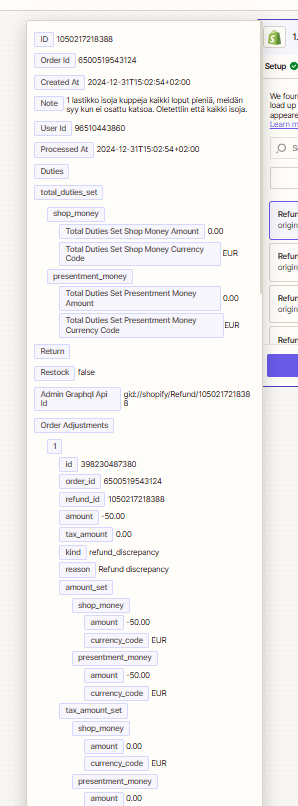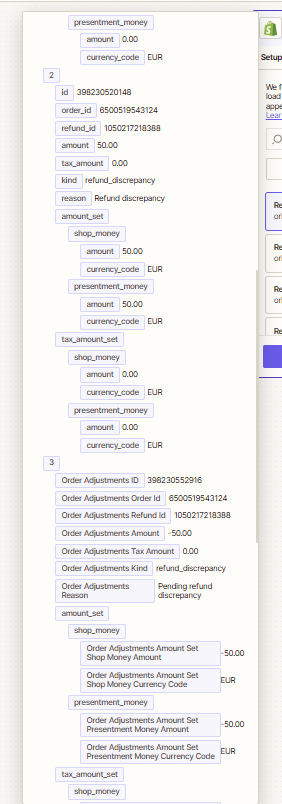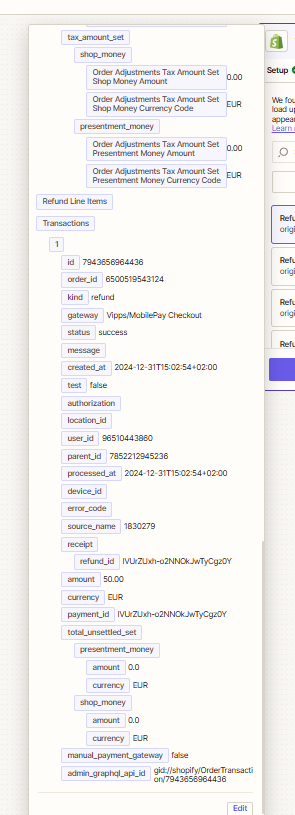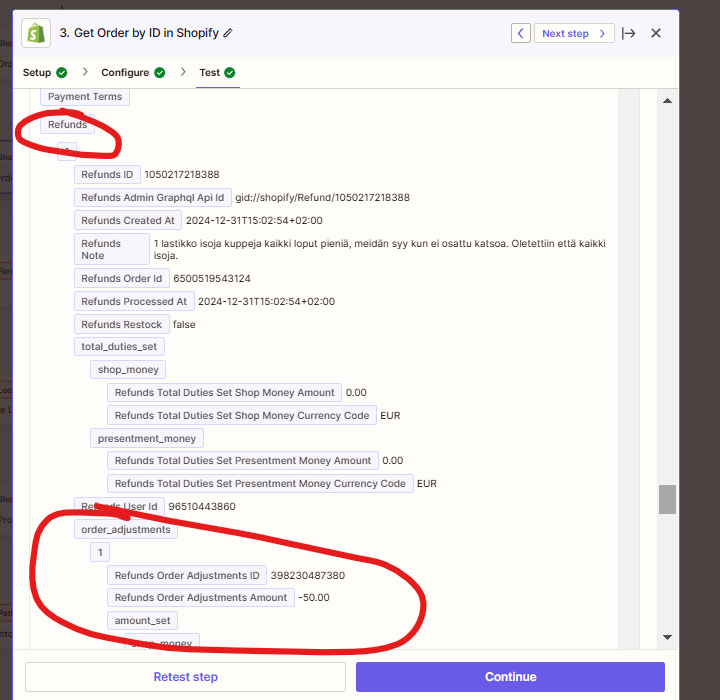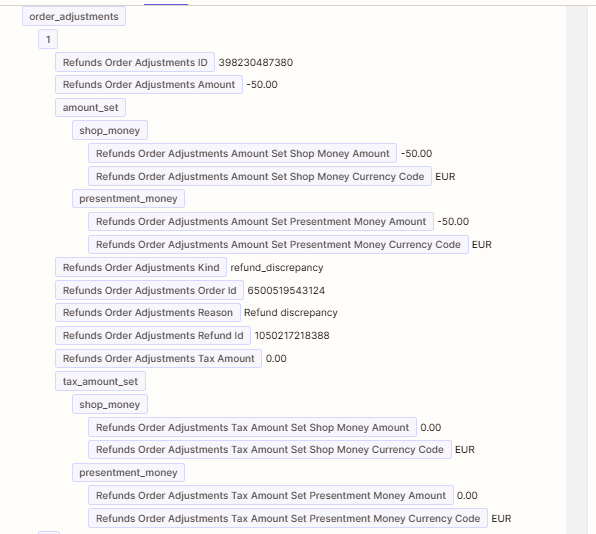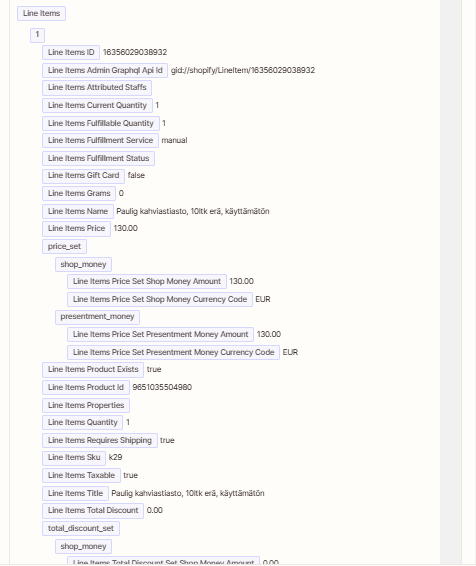Use Case:
I am connecting Shopify to my Notion Page where I manage all orders. Every order is added there for me to track, basically when someone refunds an order, I wanna find the order and product, and then mark it as refunded and update the amount to the refunded amount.
Problem:
I set the refund trigger on Zapier but it only shows the return id and transaction details which seems confusing, most orders would have multiple products, I would like to know which product was refunded and how much for each products.
Here’s the values from Shopifys Return trigger
